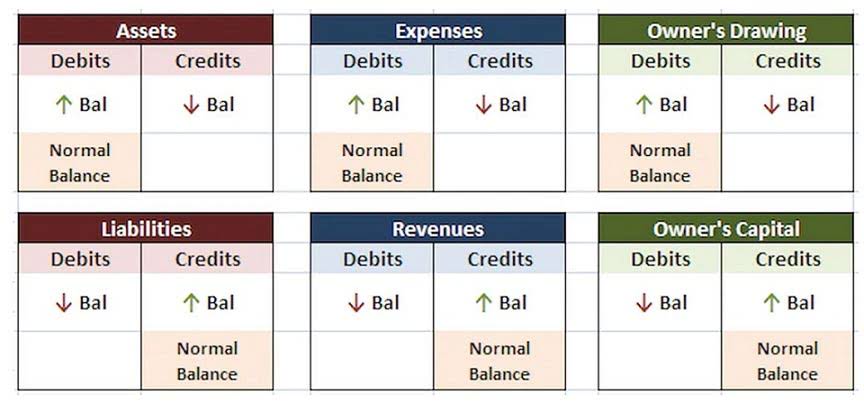
Other incomes that should be considered include income from rental property and interest income from investments and savings. The gross income of an individual is often a figure required by lenders when deciding whether or not to advance credit to an individual. The same applies to landlords when determining whether a potential gross income definition economics tenant will be able to pay the rent on time. It is also the starting point when calculating taxes due to the government.
Public Policy and Income Taxation: Exemptions, Credits, and Deductions
This is the case with Bangladesh, which recorded a 2021 GNI of $438 billion compared to a GDP of $416 billion. Ireland recorded a 2021 GNI of just over $382 billion while their GDP for the same period stood at $504 billion. Only income taxes are removed from the personal income figure when calculating disposable personal income. Rising prices tend to increase a country’s GDP, but this does not necessarily reflect any change in the quantity or quality of goods and services produced. Thus, by looking just at an economy’s nominal GDP, it can be difficult to tell whether the figure has risen because of a real expansion in production or simply because prices rose.
What Is Gross Domestic Income (GDI)?

Meanwhile, if a person buys replacement auto parts to install them on their car, those are counted towards the GDP. The sum of the gross value added in the various economic activities is known as “GDP at factor cost”. He also generates $1,000 a year in interest from a savings account, collects $500 per year in dividends from a company he owns stock in, and receives $10,000 a year from rental property income. So, Country A’s Gross National Income (GNI) for the year is $1,020 billion. This represents the total monetary value of all goods and services produced by Country A’s residents, both domestically and abroad, during that year.
How Income Taxation Works for Individuals and Businesses
In addition to paying income and sales taxes, households may also have to pay property taxes to local governments. After paying taxes and spending income on consumables, some households put aside money as savings to be used for consumption at a later time. When trying to understand what is happening at the national level, economists break income down into personal income (that which is acquired by households) and business income (that which is acquired by companies). The combination of these two quantities yields a figure called the national income, or the amount of money brought in by all people and businesses during a given time period. Income is the money that individuals and businesses bring in during a given period as a result of work or investments.
That is not only gross pay from work but also dividends, rental income, interest, and so forth. Disposable income is then calculated by taking the personal income number and subtracting personal income taxes. Personal income refers to all income collectively received by all individuals or households in a country. With GNI, the income of a country is calculated as its domestic income, plus its indirect business taxes and depreciation (as well as its net foreign factor income). The figure for net foreign factor income is calculated by subtracting all payments made to foreign companies and individuals from all payments made to domestic businesses.

What is Gross Domestic Income?
Those income items may include profits, employee compensation, property income, or taxes. GNI, therefore, is a better measure of economic well-being than GDP for countries that have large foreign receivables or outlays. GNP is the total market value of all goods and services produced by a country’s residents, both domestically and abroad, over a specific period Accounting for Technology Companies (usually one year). It includes GDP and adds the net income residents receive from abroad, which includes net factor income and net transfers. Real gross national income is the total of the gross domestic product plus net receipts from abroad (compensation of employees), property income, and net taxes minus subsidies.

History of GDP
- Gross national product accounts for its citizens’ productions both within and outside its borders.
- For example, if prices rose by 5% since the base year, then the deflator would be 1.05.
- In conclusion, understanding how income taxation works for individuals and businesses is crucial for managing personal and business finances effectively.
- However, the real GDP (expressed in 2014 dollars) would only be $75 billion, revealing that an overall decline in real economic performance actually occurred during this time.
- The major difference between GDP and GNP lies in how the two concepts define the economy.
Adjusting for inflation (the general rising of prices that makes money worth increasingly less over time), American household incomes rose gradually but steadily, with some interruptions, between 1967 and 2005. Gross national product (GNP) tracks the value of what a country’s citizens produce, regardless of where they are in the world. Unlike GDP, which sticks to retained earnings activities within national borders, GNP follows the money tied to ownership.

It is often measured using indicators like GDP (Gross Domestic Product), GNP (Gross National Product), or NNP (Net National Product) at factor cost. In conclusion, much more than just a numerical figure, National Income (NI) is a comprehensive reflection of a country’s economic vitality. Though the current measures of NI have some shortcomings, they play a crucial role in guiding governments, businesses, and individuals in making informed economic decisions. As we strive for a more holistic understanding of progress, research & development should be carried out to develop more comprehensive measures of National Income (NI) that encompass social well-being and environmental sustainability. GDP at Factor Cost (GDPFC) refers to the aggregate value of income earned from the factors of production i.e. Land, Labor, Capital, and Entrepreneurship.GDP at Factor Cost (GDPFC) excludes indirect taxes but includes subsidies.
